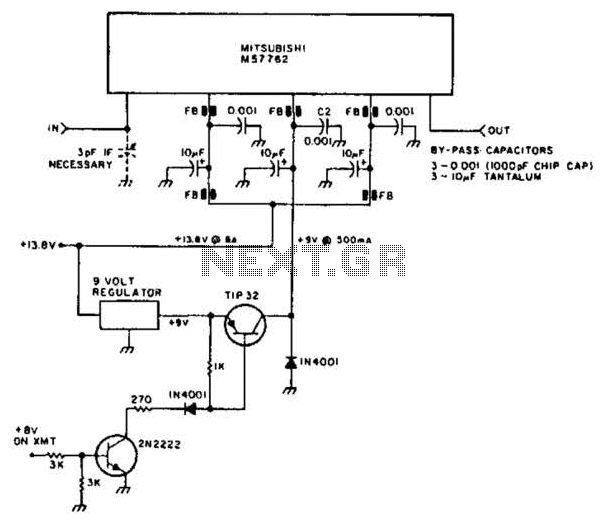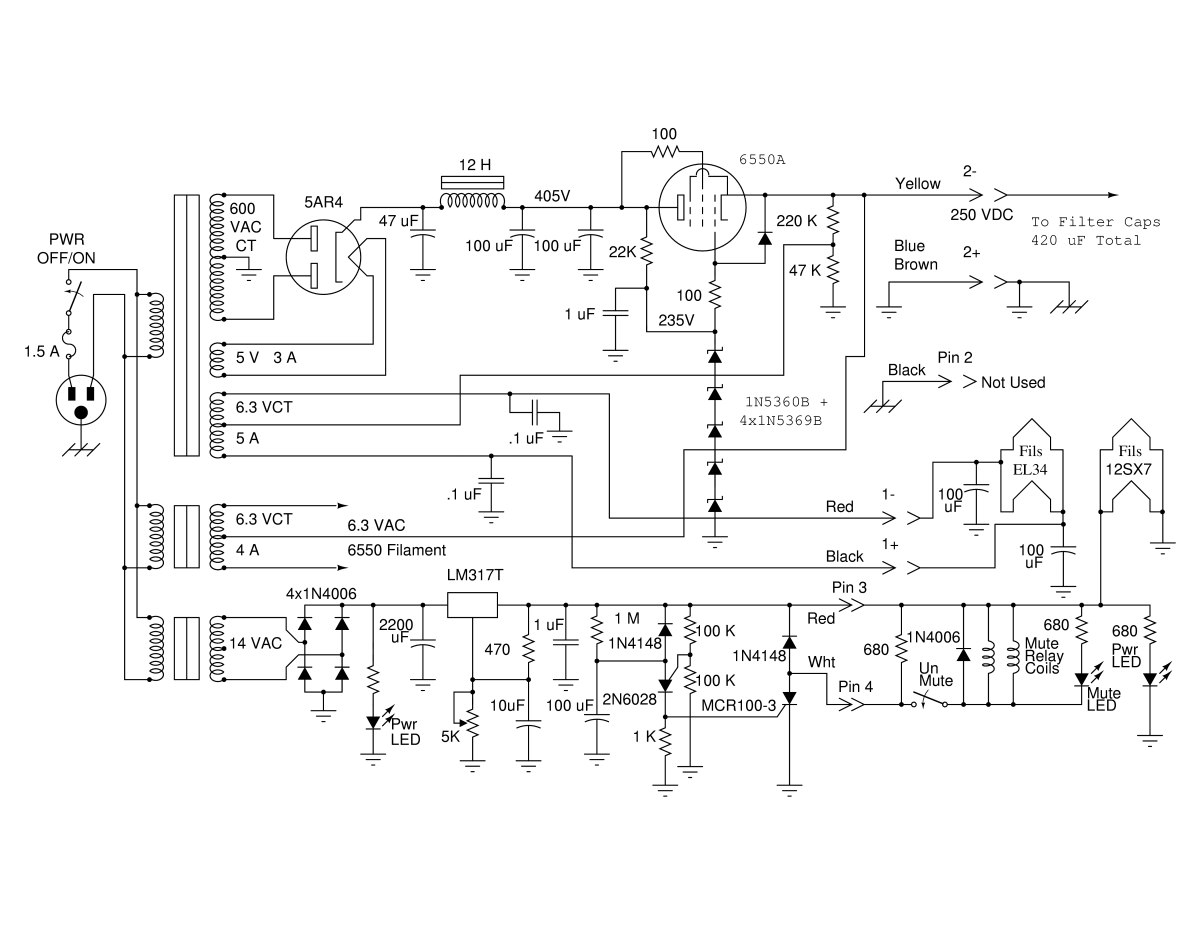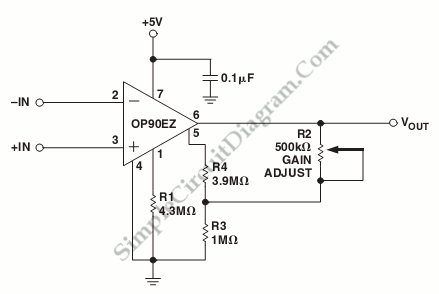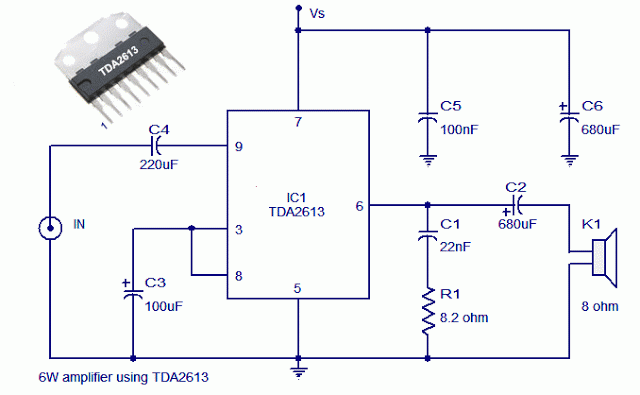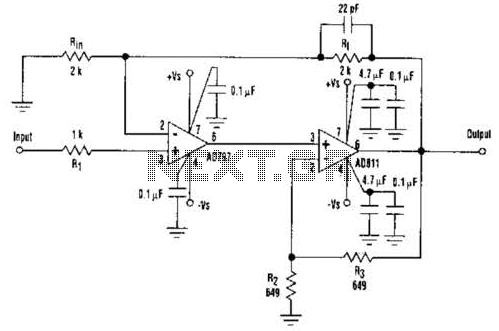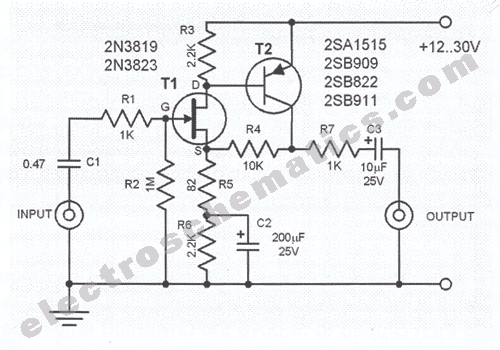
Precision thermocouple signal amplifier
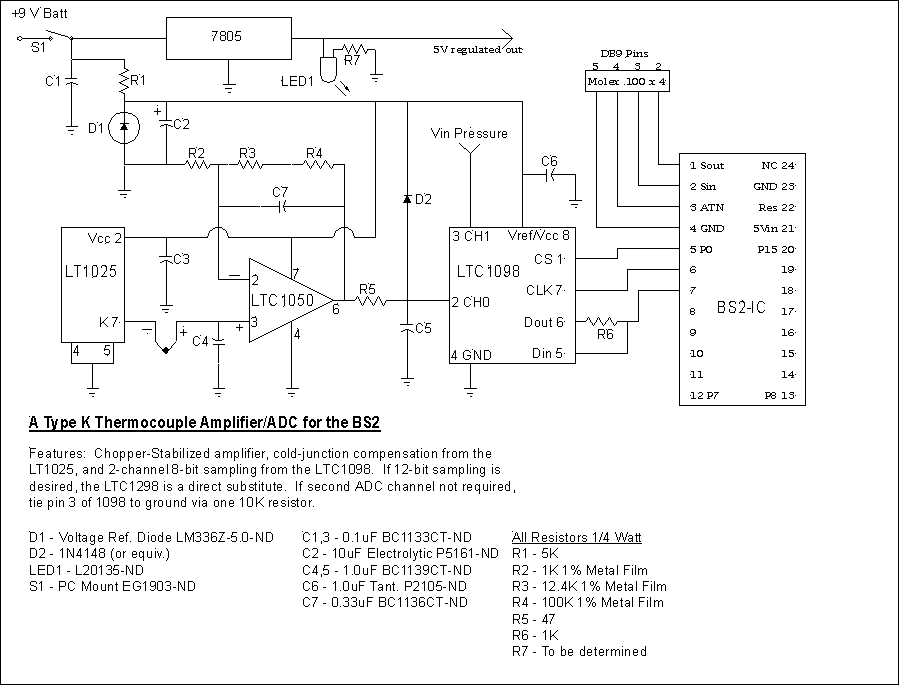
This circuit greatly expands upon the capabilities of circuit 02. A thermocouple signal is quite small, and the long thermocouple leads often induce quite a bit of noise into the system. This new circuit is far more accurate, stable, and less immune to noise. It makes use of a Linear Technologies LT1025 chip to provide CJC (Cold Junction Compensation), an LTC1098 8-bit 2-channel Analogue to Digital Converter, and an LTC1050 chopper amp. The feedback resistors are designed to deliver 5V (full scale signal) to the ADC with a 1000 degree C. Type K signal. The 1050 is a great amplifier, delivering "rail to rail" output which makes powering the circuit simple. This circuit is far superior to the basic op-amp circuit shown above, but is still complex. The actual EGT section of the ECU has been replaced with an Analog Devices AD595 IC.
The described circuit enhances the measurement accuracy of thermocouples, specifically Type K thermocouples, which are commonly used for high-temperature applications. The circuit addresses the inherent challenges associated with thermocouple signals, which are typically low in amplitude and susceptible to noise, especially when long leads are involved.
The LT1025 chip is integral to the circuit, providing Cold Junction Compensation (CJC) necessary for accurate temperature readings. CJC compensates for the temperature at the connection point of the thermocouple to the measurement system, ensuring that variations in ambient temperature do not affect the accuracy of the readings.
The LTC1098 serves as an 8-bit, 2-channel Analog to Digital Converter (ADC), allowing for the digitization of the analog signals received from the thermocouple. The design of the feedback resistors ensures that the ADC receives a full-scale signal of 5V corresponding to a temperature of 1000 degrees Celsius, optimizing the resolution of the temperature measurement.
The LTC1050 is utilized as a chopper amplifier, which provides a significant advantage by delivering a "rail to rail" output. This characteristic simplifies the power supply requirements for the circuit, making it more versatile and easier to integrate into various systems. The chopper design also helps to minimize offset voltage and drift, enhancing the stability and accuracy of the amplification process.
Lastly, the integration of the Analog Devices AD595 IC in place of the basic op-amp circuit significantly improves the performance of the Exhaust Gas Temperature (EGT) section of the Engine Control Unit (ECU). The AD595 is designed specifically for thermocouple applications, providing precision and reliability in temperature measurement, further augmenting the overall capabilities of the circuit.
Overall, this circuit design represents a sophisticated solution for accurate temperature measurement using thermocouples, addressing common challenges while enhancing performance and stability.This circuit greatly expands upon the capabilities of circuit 02. A thermocouple signal is quite small, and the long thermocouple leads often induce quite a bit of noise into the system. This new circuit is far more accurate, stable, and less immune to noise. It makes use of a Linear Technologies LT1025 chip to provide CJC (Cold Junction Compensation), an LTC1098 8-bit 2-channel Analogue to Digital Converter, and an LTC1050 chopper amp.
The described circuit enhances the measurement accuracy of thermocouples, specifically Type K thermocouples, which are commonly used for high-temperature applications. The circuit addresses the inherent challenges associated with thermocouple signals, which are typically low in amplitude and susceptible to noise, especially when long leads are involved.
The LT1025 chip is integral to the circuit, providing Cold Junction Compensation (CJC) necessary for accurate temperature readings. CJC compensates for the temperature at the connection point of the thermocouple to the measurement system, ensuring that variations in ambient temperature do not affect the accuracy of the readings.
The LTC1098 serves as an 8-bit, 2-channel Analog to Digital Converter (ADC), allowing for the digitization of the analog signals received from the thermocouple. The design of the feedback resistors ensures that the ADC receives a full-scale signal of 5V corresponding to a temperature of 1000 degrees Celsius, optimizing the resolution of the temperature measurement.
The LTC1050 is utilized as a chopper amplifier, which provides a significant advantage by delivering a "rail to rail" output. This characteristic simplifies the power supply requirements for the circuit, making it more versatile and easier to integrate into various systems. The chopper design also helps to minimize offset voltage and drift, enhancing the stability and accuracy of the amplification process.
Lastly, the integration of the Analog Devices AD595 IC in place of the basic op-amp circuit significantly improves the performance of the Exhaust Gas Temperature (EGT) section of the Engine Control Unit (ECU). The AD595 is designed specifically for thermocouple applications, providing precision and reliability in temperature measurement, further augmenting the overall capabilities of the circuit.
Overall, this circuit design represents a sophisticated solution for accurate temperature measurement using thermocouples, addressing common challenges while enhancing performance and stability.This circuit greatly expands upon the capabilities of circuit 02. A thermocouple signal is quite small, and the long thermocouple leads often induce quite a bit of noise into the system. This new circuit is far more accurate, stable, and less immune to noise. It makes use of a Linear Technologies LT1025 chip to provide CJC (Cold Junction Compensation), an LTC1098 8-bit 2-channel Analogue to Digital Converter, and an LTC1050 chopper amp.
The feedback resistors are designed to deliver 5V (full scale signal) to the ADC with a 1000 degree C. Type K signal. The 1050 is a great amplifier, delivering "rail to rail" output which makes powering the circuit simple.
This circuit is far superior to the basic op-amp circuit shown above, but is still complex. The actual EGT section of the ECU has been replaced with an Analog Devices AD595 IC.
Warning: include(partials/cookie-banner.php): Failed to open stream: Permission denied in /var/www/html/nextgr/view-circuit.php on line 713
Warning: include(): Failed opening 'partials/cookie-banner.php' for inclusion (include_path='.:/usr/share/php') in /var/www/html/nextgr/view-circuit.php on line 713
